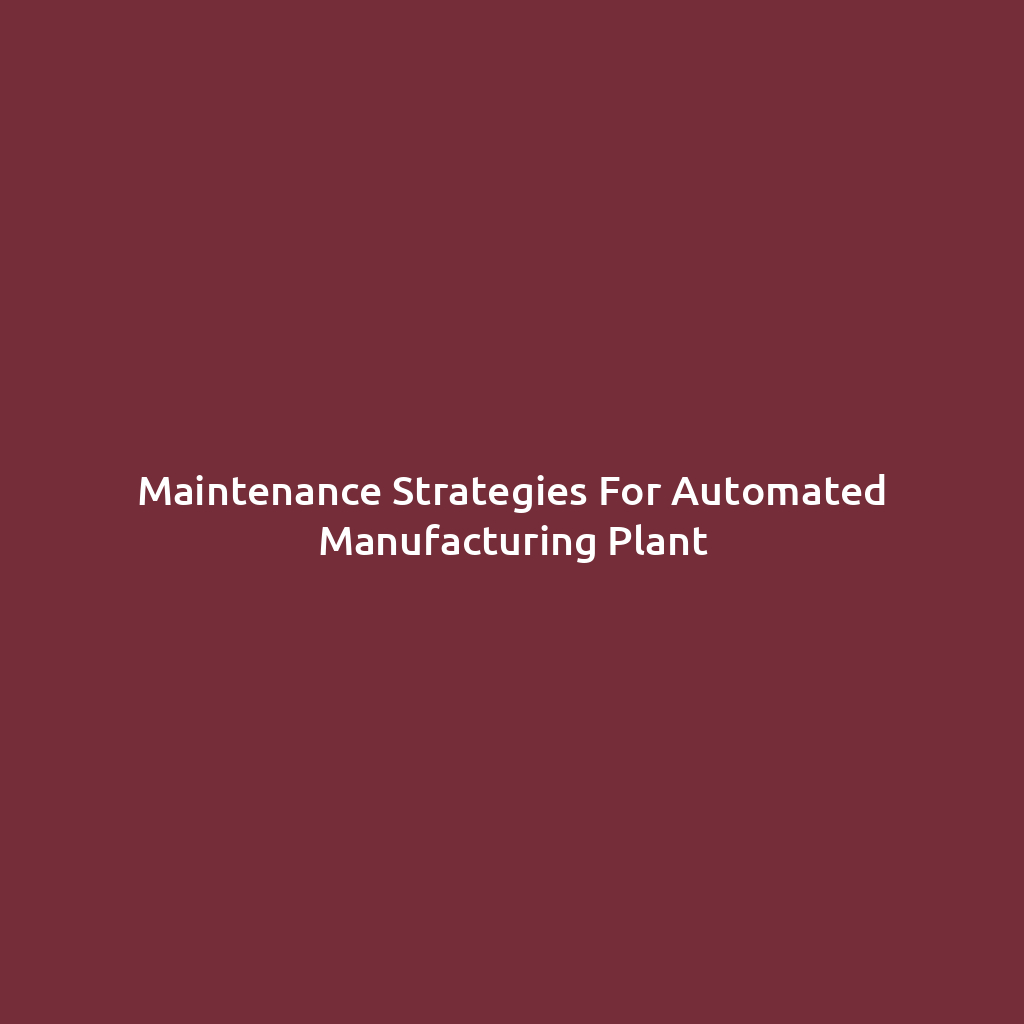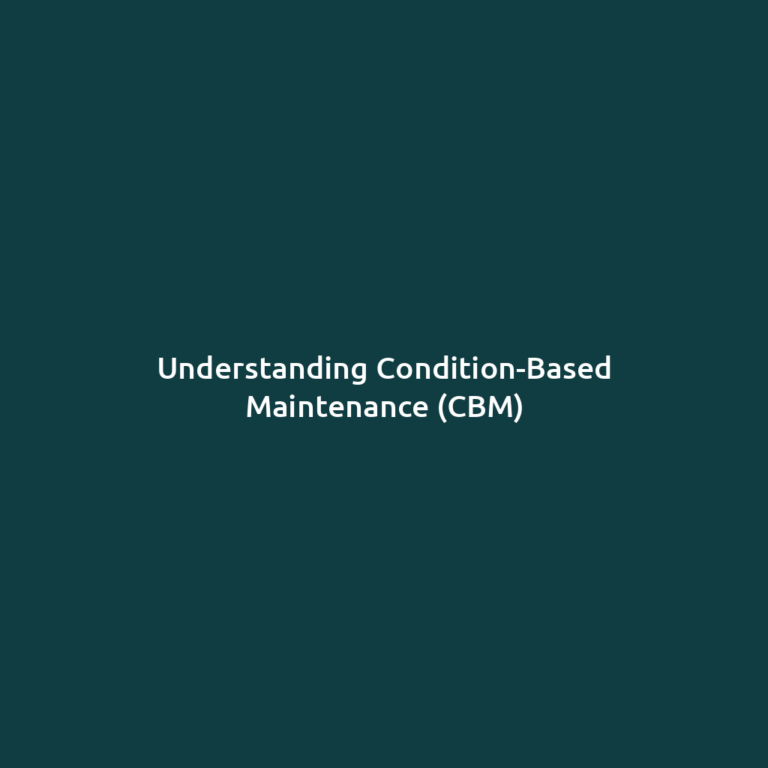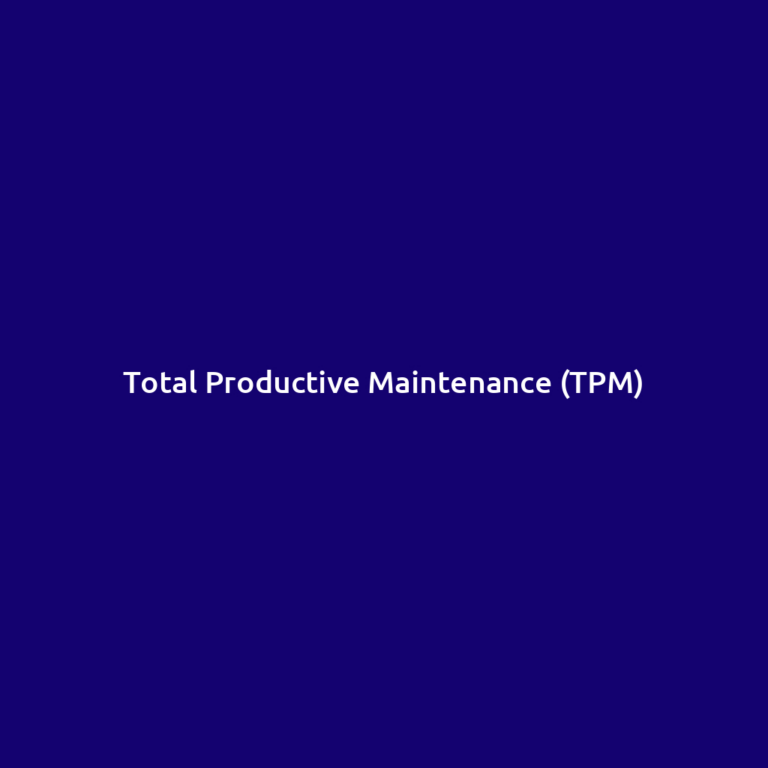Maintenance Strategies for Automated Manufacturing Plant
Maintenance strategies for automated manufacturing plants are the backbone of modern industrial efficiency. Imagine walking into a factory where robots tirelessly assemble products with incredible precision, only to realize that a single glitch in the system could bring everything to a halt. This is where robust maintenance strategies step in, ensuring seamless operations and minimizing downtime.
In this article, we’ll explore the most effective approaches to maintaining automated manufacturing systems. Using real-life examples, we’ll dive into strategies that save costs, boost productivity and prolong equipment lifespan. Let’s break it all down.
In an automated manufacturing plant, the stakes are higher than in traditional setups. A minor error can cascade into major disruptions, causing missed deadlines, unhappy clients and financial losses.
Maintenance strategies for automated manufacturing plants are not just an afterthought; they are a core part of the business strategy.
For instance, predictive maintenance uses advanced analytics to predict when a machine might fail. This proactive approach prevents costly breakdowns and optimizes the overall workflow. In contrast, reactive maintenance waits for failures to occur, often leading to prolonged downtime and higher costs. Striking the right balance between these approaches is essential.
Table of Contents
- 1 Types of Maintenance Strategies for Automated Manufacturing Plants
- 2 The Role Technology Plays in Maintenance Strategies
- 3 Optimizing Maintenance Strategies for Automated Manufacturing Plants
- 4 Cost Implications of Maintenance Strategies
- 5 Challenges in Maintenance Strategies for Automated Manufacturing Plants
- 6 Frequently Asked Questions
Types of Maintenance Strategies for Automated Manufacturing Plants
Let’s break down the major types of maintenance strategies in automated manufacturing plants. Each has its place but choosing the right combination can make all the difference.
1. Preventive Maintenance
Preventive maintenance is the proactive hero of the manufacturing world. Regularly scheduled check-ups and servicing ensure that machines remain in top shape.
For instance:
- Routine Inspections: Identifying wear and tear before it becomes problematic.
- Scheduled Replacements: Swapping out aging parts before they fail.
- Lubrication and Cleaning: Keeping components in optimal condition.
Case in Point: A leading electronics manufacturer adopted preventive maintenance for their automated assembly lines, reducing downtime by 30% over two years.
2. Predictive Maintenance
Predictive maintenance takes the guesswork out of equipment care. Using sensors and data analytics, this approach predicts when a machine is likely to fail, enabling timely intervention.
- How It Works: Sensors monitor vibration, temperature and other metrics.
- Key Tools: AI and machine learning analyze the data for actionable insights.
- Benefits: Reduced unplanned downtime and lower maintenance costs.
Example: A car manufacturer implemented predictive maintenance in their automated plants, saving millions by avoiding unexpected halts in production.
The Role Technology Plays in Maintenance Strategies
Technology drives maintenance strategies for automated manufacturing plants. With the rise of Industry 4.0, advanced tools have revolutionized how plants operate and maintain their machinery.
1. IoT-Driven Monitoring
The Internet of Things (IoT) connects devices and machinery, allowing real-time monitoring. IoT sensors collect data, which is analyzed to detect anomalies early.
- Real-Life Impact: A beverage company used IoT sensors to monitor their bottling lines, reducing breakdowns by 40%.
2. Digital Twins
Digital twins are virtual replicas of physical assets. These models help manufacturers simulate scenarios and predict potential failures without risking actual equipment.
- Application: By creating a digital twin of their automated plant, a pharmaceutical company improved efficiency and reduced downtime.
Optimizing Maintenance Strategies for Automated Manufacturing Plants
To achieve maximum efficiency, a combination of strategies is often the best approach. Here’s how companies can optimize their maintenance efforts:
1. Tailor Strategies to Specific Needs
Every automated plant has unique requirements. For example, a high-speed assembly line may need more frequent maintenance than a slower, less complex process.
2. Train Staff for Maintenance Excellence
Skilled technicians are invaluable. Providing training on predictive analytics, IoT tools and maintenance protocols ensures smooth operations.
3. Invest in Continuous Improvement
Maintenance strategies evolve. Regularly reviewing and updating processes ensures they remain effective as technology and operational demands change.
Cost Implications of Maintenance Strategies
One of the biggest challenges in implementing maintenance strategies for automated manufacturing plants is managing costs. However, the long-term savings often outweigh initial investments.
- Preventive Maintenance: While it incurs regular costs, it reduces expensive emergency repairs.
- Predictive Maintenance: Requires investment in sensors and analytics but prevents catastrophic failures.
- Reactive Maintenance: Appears cost-effective initially but can lead to high expenses during unexpected breakdowns.
Example: A global electronics firm calculated that predictive maintenance reduced their overall maintenance costs by 25% compared to reactive approaches.
Challenges in Maintenance Strategies for Automated Manufacturing Plants
Despite the benefits, implementing maintenance strategies comes with challenges:
1. High Initial Costs
Setting up predictive maintenance systems or IoT networks requires significant investment.
2. Data Overload
Collecting data is easy; making sense of it is hard. Companies need robust analytics to derive actionable insights.
3. Integration Issues
New maintenance technologies must seamlessly integrate with existing systems, which can be complex.
Maintenance strategies for automated manufacturing plants are not optional – they’re essential for success. By combining preventive, predictive and reactive approaches, companies can optimize operations, reduce costs and ensure long-term reliability.
Implementing these strategies requires investment, planning and skilled personnel but the rewards are immense. Whether it’s through IoT-driven monitoring, AI-powered analytics or tailored maintenance plans, the path to efficient automation is clear.
Frequently Asked Questions
1. What are the most effective maintenance strategies for automated manufacturing plants?
The most effective strategies include preventive maintenance, predictive maintenance and reactive maintenance. Each serves a unique purpose but a combination of these approaches often delivers the best results for minimizing downtime and optimizing performance.
2. How does predictive maintenance differ from preventive maintenance?
Predictive maintenance uses sensors and data analytics to predict potential failures allowing for timely intervention. Preventive maintenance, on the other hand, involves scheduled inspections and servicing to prevent equipment from failing prematurely.
3. What role does IoT play in automated manufacturing plant maintenance?
IoT enables real-time monitoring of machinery through connected sensors. These sensors collect data on performance metrics like temperature and vibration, which can be analyzed to detect anomalies and prevent breakdowns.
4. Is predictive maintenance cost-effective for small-scale plants?
Yes while the initial investment in sensors and analytics might be high, the long-term savings from reduced downtime and lower repair costs make predictive maintenance a worthwhile option for plants of all sizes.
5. What challenges are common in implementing maintenance strategies?
Key challenges include high initial costs, data management issues, integration with existing systems and ensuring staff are trained to utilize new technologies effectively.
6. How can digital twins help in maintenance strategies?
Digital twins are virtual replicas of physical assets that allow for simulations of potential scenarios. By using digital twins, manufacturers can predict failures, optimize maintenance schedules and test changes without impacting actual machinery.
7. What future trends will shape maintenance strategies for automated manufacturing plants?
Trends like AI-powered maintenance, augmented reality tools for technicians and autonomous self-maintaining systems are expected to revolutionize how plants approach maintenance.
8. How often should preventive maintenance be scheduled?
The frequency of preventive maintenance depends on the type of equipment, its usage and the operational environment. It’s typically based on manufacturer recommendations and historical data.
9. Can maintenance strategies reduce downtime significantly?
Absolutely. Implementing robust maintenance strategies can minimize unplanned downtime by proactively addressing potential issues before they escalate into major problems.
10. What industries benefit the most from advanced maintenance strategies?
Industries relying heavily on automation such as automotive manufacturing, electronics, pharmaceuticals and food processing, benefit significantly from advanced maintenance strategies. These strategies ensure high efficiency and consistent quality in production.




